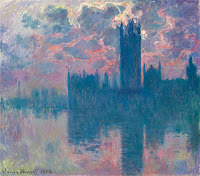We have been watching the Toy Story films and cartoons this week to prep for Toy Story 4. In doing so, I was struck by a few things in Toy Story. First, it's amazing how far the animation has progressed. The film seemed so amazing when it appeared over 25 years ago, but it definitely looks cruder and rougher compared to today's computer animation, and it's very noticeable.
Second, I was struck by a number of places I'd like to visit in those films. As the trend in theme parks and themed design has moved to exact recreations of places from film and television, it would seem these would be a license to print money for the Disney company. But as of yet, they have not been created anywhere.
That got me to thinking, what other restaurants or stores have been drawn or placed in Disney/Pixar/etc. films that would be wonderfully translated into real places to experience or visit? What other examples can be named of such a missed opportunity?
So, without further ado, the Top 10 Disney restaurants or shops that need to be built as soon as possible.
- Pizza Planet (Toy Story)- yes, Disneyland has renamed Rocket Red's Pizza Port to Alien Pizza Planet, but it is no recreation. Why has there not been a Pizza Planet restaurant, with the exact designed exterior? With a Whack an Alien Machine, the Alien Slime Slushes, an exact replica Alien Claw machine with the three-eyed aliens in it? Pizza Planet Truck parked outside? This would be amazing.
- Al’s Toy Barn (Toy Story 2) - again, a play-set version of this has been built in Shanghai, but a real version of the Toy Barn is just begging to be implemented. This would be the perfect place for Toy Story merchandise. And it's very surprising it has not yet been done.
- Poultry Palace (Small Fry, Toy Story Toon) - A fast-food, castle themed poultry place from the Toy Story Toons. I know I want the Fry Gauntlet and the Nuggets of the Round Table advertised in the short. This would seem to be a great opportunity for Disney to create their own kids meals for sale in their theme parks.
- Harryhausen’s (Monsters, Inc.) - A Monster themed Japanese/sushi restaurant named for the pioneer of stop-motion monsters. It would be such a perfect addition to a Monsters Inc./University/At Work section.
- Cars Drive In (Cars)- The proposed addition to Cars Land that has not yet been built. An interior drive-in style restaurant like the Sci-Fi Dine In, but with Cars style vehicles and Cars universe clips on the drive in screen. Again, it seems like an addition that should have already been built long ago.
- Ink & Paint Club (Who Framed Roger Rabbit?) - A toon speakeasy, with the password "Walt sent me" for access. Classic toon craziness combined with an art deco club. Would be a perfect addition for Hollywoodland in Disney California Adventure or Sunset Boulevard in Disney Hollywood Studios.
- Tiana’s Place (The Princess and the Frog) - A beautiful jazz kitchen from Disney's New Orleans based film. The food and music alone would make this worth it.
- Flynn’s Arcade (Tron) - An epic arcade with 80s games and music blaring, especially Journey. Make this a barcade and this would be a great addition to Disney Springs.
- Lucky Cat Cafe (Big Hero 6) - An interesting cafe with smoothies, macarons, and sandwiches, with a San Franciscan/Japanese hybrid looking fitting for San Fransokyo. Would be a great addition to Disney California Adventure.
- Shawarma Palace (Avengers) - A perfect addition to a Marvel land, with the opportunity to join the Avengers in trying shawarma. A little piece of the MCU realized in this world.
I think each of these options would be great additions to Disney's theme parks and regional entertainment centers. Each would be a bit of themed design, each would represent a popular IP or location that Disney has created, and each would round out existing locations Disney has created.
What locations from film have you always wanted to visit? What fictional restaurants have you wanted to partake at?










































